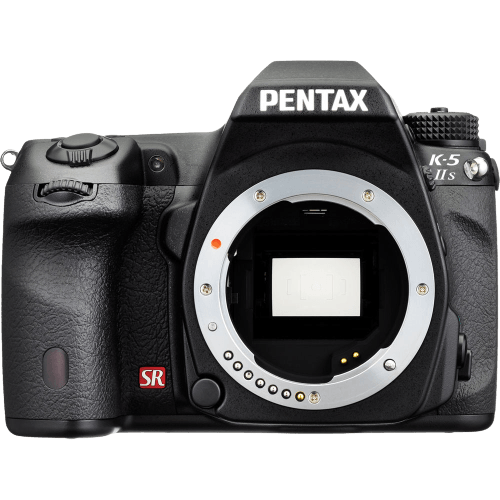Pentax K-5 IIs Specs and Scores

The Pentax K-5 IIs receives a score of 57/100 in our evaluation. This DSLR camera was announced on September 11, 2012, and released later that year with a launch price of $1199. Measuring 131 x 97 x 73mm and weighing 760g (1.68lbs), the K-5 IIs is a solid option for photography enthusiasts. However, considering its age and the advancements in camera technology since 2012, the specifications of this camera may not be as competitive in today’s market. Despite this, the Pentax K-5 IIs still has its merits and can be a reliable choice for certain photographers.
Pentax K-5 IIs Overview and Optics
The Pentax K-5 IIs receives a score of 60/100 for its optics. Equipped with a 16.3-megapixel APS-C CMOS sensor, the camera produces high-quality images. The Prime II processor ensures efficient performance, while the shooting speed of 7 frames per second allows for capturing fast-moving subjects.
In today’s market, the K-5 IIs maintains a competitive edge with its lens mount, the Pentax KAF, which offers compatibility with a wide range of lenses. Additionally, the camera comes with built-in image stabilization, further enhancing the quality of images captured. The 3:2 aspect ratio is a standard format, ensuring compatibility with various display devices.
Considering these specifications, the Pentax K-5 IIs provides a solid optical performance. Its DXOMARK sensor score of 82 supports this statement. While there are more advanced cameras available, the K-5 IIs remains a reliable option for photographers seeking a versatile and dependable camera.
Pentax K-5 IIs Video Performance
The Pentax K-5 IIs receives a video score of 57 out of 100. This camera offers Full HD video resolution, with maximum dimensions of 1920 x 1080 pixels. The K-5 IIs provides a maximum video frame rate of 25 frames per second, which may not compete with the higher frame rates of other cameras in the market. However, the camera does include built-in time-lapse functionality, which is a desirable feature for capturing creative video content.
Taking the specifications into account, the Pentax K-5 IIs has decent video capabilities but falls short when compared to more advanced cameras in today’s market. The lower frame rate and Full HD resolution may not appeal to those seeking exceptional video quality, but the time-lapse feature is a positive aspect of this camera.
Pentax K-5 IIs Features and Benefits
The Pentax K-5 IIs receives a feature score of 54 out of 100. This score reflects the camera’s capabilities based on its specifications. The camera has a 3-inch screen with a resolution of 921,000 dots. However, it lacks a touchscreen, flip screen, GPS, WiFi, and Bluetooth connectivity.
When comparing the K-5 IIs to other cameras in today’s market, it falls short in terms of modern features. Many current cameras offer touchscreens, flip screens, and wireless connectivity options such as WiFi and Bluetooth. These features improve user experience and provide greater flexibility for photographers.
Despite its lower feature score, the Pentax K-5 IIs still offers quality performance in terms of optics and video. Potential buyers must consider their specific needs and preferences when deciding whether this camera is suitable for them.
Pentax K-5 IIs Storage and Battery
The Pentax K-5 IIs storage and battery score is 43 out of 100. This camera has only one memory card slot, accepting SD, SDHC, and SDXC cards. In today’s market, having a single card slot might be a downside for some photographers who prefer dual slots for backup or extra storage.
The battery life of the Pentax K-5 IIs is 980 shots, which is a decent number for a DSLR. The camera uses a D-LI90P battery type, but it does not support USB charging. This may be a drawback for those who want the convenience of charging their camera through a USB port.
Taking these specifications into account, the Pentax K-5 IIs storage and battery features are satisfactory but not exceptional in the current market.
